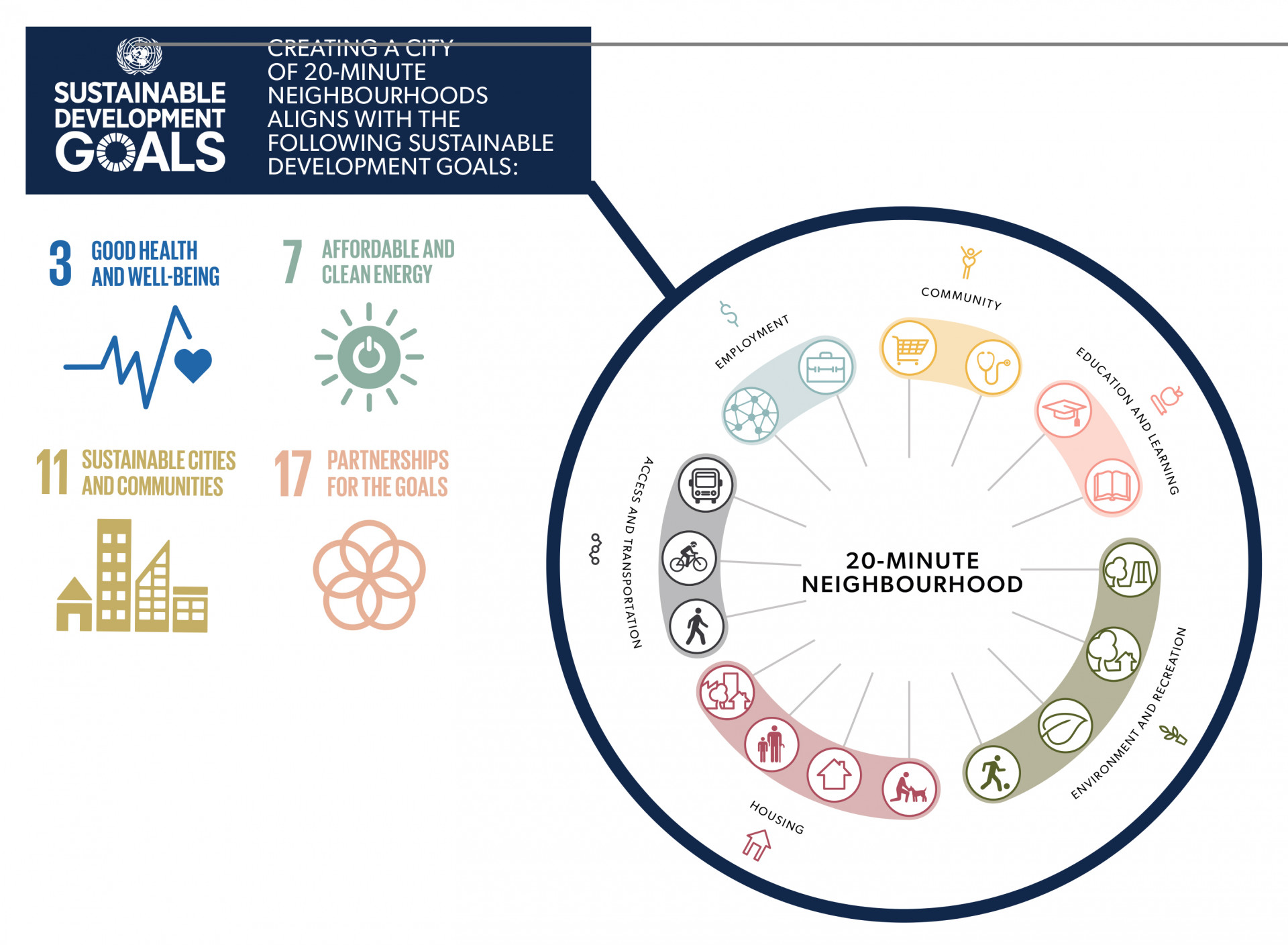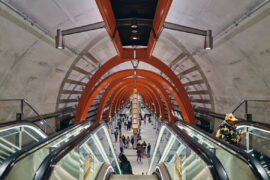Like “a hard disc thrust into a cloud computing space” – how lockdowns have forced people and organisations to reformat the way they work.

Adobe, San Jose, by Gensler San Jose, photo by Emily Hagopian
August 24th, 2021
We’ve learnt very rapidly just how closely enmeshed work and life can become. For those living in lengthy lockdowns, the realities of living, working and/or home-schooling from the one location have thrown up benefits and challenges alike.
We’ve been liberated from the dreaded daily commute, gifted more time for ourselves and family, but also cut off from the social interactions and everyday human connections that we once took for granted. Technology has rapidly adapted to work around us, allowing us to better collaborate while still being remote. But the transition to a hybrid style of working has also thrown up accessibility challenges too.

At the INDE.Summit’s Ecosystems Of Commercial Space In The Indo-Pacific, chaired by Simone Oliver of Architectus, we learnt that amidst a period of rapid change and remodelling there is emerging a new series of lifelines for organisations and communities alike. But these require courage and a willingness to challenge the traditional frameworks of human resources, real estate, city planning and workplace design.
In the view of panellist James Calder, global director, user strategy at ERA-co, the 9-to-5 bums-in-seats model of working had already lasted well beyond its use-by date – even before the pandemic hit. “We’ve been able to work flexibly for 15 years – quite easily. But that hasn’t really happened,” he notes. The onset of the pandemic and the mass-movement to working-from-home has had the effect of a “hard disk thrust into a cloud computing space”. Something had to break. And as Calder points out, everything has fragmented. It’s time to reformat organisations around a new way of working.
Greatly impacting people’s willingness to return to a traditional mode of office working is the commute. As Nayan Parekh, principal and consulting and real estate services leader at Gensler, points out, the logistics around travel strongly influence a person’s decision to return to the office or remain working from home. Research conducted by Gensler indicates a vast majority of people will opt for a hybrid way of working. (For example, three days from the office, two from home.)
 Gensler are creating new ways of thinking about how we design the experience of work in offices and beyond, image courtesy of Gensler
Gensler are creating new ways of thinking about how we design the experience of work in offices and beyond, image courtesy of Gensler
The silver lining to the “COVID cloud”, as Mike Day co-founder of Roberts Day so pithily puts it, is the great and (now very real) potential of the 15-minute city. (That time does vary case-by-case). Essentially the idea is that all your daily needs are served within a 15-minute proximity of your home. From a sustainability point-of-view this micro-mobility approach is a no brainer: that you might walk or bike from home to your groceries, to your neighbourhood studio or co-working space. But it also feeds social and family wellbeing, being closer together, spending more time together. By creating “places where people can live, work, learn and play, we’ll be better off”, notes Day.
But this doesn’t herald the death of the CBD – no matter how outdated the term ‘central business district’ might feel right now. Calder believes CBDs will still be critical. The emphasis will be on a “whole new offer from providers of space that is about shared communal space, which becomes your own when you need it”, he says.
 Informed by the Sustainable Development goals devised by the Department of Environment, Land, Water and Planning, Victoria, Hatch RobertsDay is at the forefront of urban planning for liveability in Australia. Image courtesy of Hatch RobertsDay
Informed by the Sustainable Development goals devised by the Department of Environment, Land, Water and Planning, Victoria, Hatch RobertsDay is at the forefront of urban planning for liveability in Australia. Image courtesy of Hatch RobertsDay
And while it’s all up in the air, that’s not a bad thing. Experimentation as a means to establishing a new future is key. As Rosemary Kirkby, principal of Rosemary Kirkby & Associates says, HR isn’t going to arrive to give us the new workplace policies any time soon. Because it’s not as simple as reducing desk space. We must question the very purpose of the workplace and its configuration. “The HR team have to move in with the real estate team and do it together,” she notes.
Kirkby also points out one very important element in the complex working-futures equation, and that’s people. For any organisation the imperative is to listen – and with courage. Because harnessing the voices of your people will pave the way for the future of your business. Tom Owens, managing director and principal at Gensler, is of a similar mind, noting that you must make decisions based on your people and your business, and apply this to your workplace. In this new-look hybrid working scenario there is no “silver bullet” or uniform approach.
“We’ve jumped the hurdle of acceptance of a hybrid way of working”, says Kirkby. Let’s not rush the discussion.

Accenture Melbourne, by Gensler Sydney, photo by Nicole England
The INDE.Summit Ecosystems Of Commercial Space In The Indo-Pacific was moderated by Simone Oliver of Architectus, and featured panellists James Calder of ERA-co, Mike Day of Roberts Day, Rosemary Kirkby of Rosemary Kirkby & Associates, and Tom Owens and Nayan Parekh of Gensler.
The full panel discussion is now available to stream on demand, along with the rest of the insight-rich panel discussions from the inaugural INDE.Summit programme.
INDESIGN is on instagram
Follow @indesignlive
A searchable and comprehensive guide for specifying leading products and their suppliers
Keep up to date with the latest and greatest from our industry BFF's!

In an industry where design intent is often diluted by value management and procurement pressures, Klaro Industrial Design positions manufacturing as a creative ally – allowing commercial interior designers to deliver unique pieces aligned to the project’s original vision.

At the Munarra Centre for Regional Excellence on Yorta Yorta Country in Victoria, ARM Architecture and Milliken use PrintWorks™ technology to translate First Nations narratives into a layered, community-led floorscape.

For a closer look behind the creative process, watch this video interview with Sebastian Nash, where he explores the making of King Living’s textile range – from fibre choices to design intent.

Merging two hotel identities in one landmark development, Hotel Indigo and Holiday Inn Little Collins capture the spirit of Melbourne through Buchan’s narrative-driven design – elevated by GROHE’s signature craftsmanship.

Rocks On has been servicing Australia’s design community with the finest stoneware and hard surfaces for 20 years, and in 2020, they’re sending one design group to Milan!
Showcasing the opportunities for stargazing thanks to reduced light pollution, Sydney Observatory’s Festival of the Stars will provide two nights of spectacular sights on the first weekend of Smart Light Sydney.
The internet never sleeps! Here's the stuff you might have missed

Jason Gibney, winner of the Editor’s Choice Award in 2025 Habitus House of the Year, reflects on how bathroom rituals might just be reshaping Australian design.

A collaboration between Hassell, Weston Williamson + Partners (WW+P Architects) and Rogers Stirk Harbour + Partners (RSHP) sees the opening of five new underground stations.

Tongue & Groove hosted a lively gathering to celebrate two new collections by Greg Natale, bringing together designers and industry peers.

The Simple Living Passage marks the final project in the Simple World series by Jenchieh Hung + Kulthida Songkittipakdee of HAS design and research, transforming a retail walkway in Hefei into a reflective public space shaped by timber and movement.